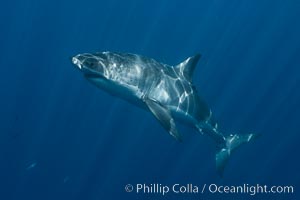
Great white shark, research identification photograph. A great white shark is countershaded, with a dark gray dorsal color and light gray to white underside, making it more difficult for the shark's prey to see it as approaches from above or below in the water column. The particular undulations of the countershading line along its side, where gray meets white, is unique to each shark and helps researchers to identify individual sharks in capture-recapture studies. Guadalupe Island is host to a relatively large population of great white sharks who, through a history of video and photographs showing their countershading lines, are the subject of an ongoing study of shark behaviour, migration and population size.
Species: Great white shark, Carcharodon carcharias
Location: Guadalupe Island (Isla Guadalupe), Baja California, Mexico
Image ID: 28769
Species: Great white shark, Carcharodon carcharias
Location: Guadalupe Island (Isla Guadalupe), Baja California, Mexico
Image ID: 28769
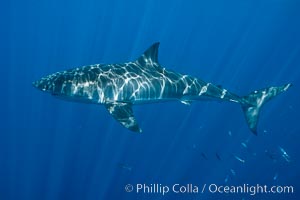
Great white shark, research identification photograph. A great white shark is countershaded, with a dark gray dorsal color and light gray to white underside, making it more difficult for the shark's prey to see it as approaches from above or below in the water column. The particular undulations of the countershading line along its side, where gray meets white, is unique to each shark and helps researchers to identify individual sharks in capture-recapture studies. Guadalupe Island is host to a relatively large population of great white sharks who, through a history of video and photographs showing their countershading lines, are the subject of an ongoing study of shark behaviour, migration and population size.
Species: Great white shark, Carcharodon carcharias
Location: Guadalupe Island (Isla Guadalupe), Baja California, Mexico
Image ID: 28770
Species: Great white shark, Carcharodon carcharias
Location: Guadalupe Island (Isla Guadalupe), Baja California, Mexico
Image ID: 28770
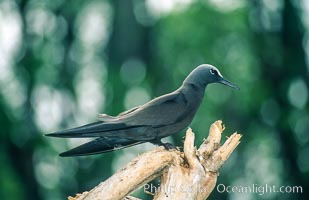
Brown noddy at Rose Atoll NWRF.
Location: Rose Atoll National Wildlife Sanctuary, American Samoa
Image ID: 00897
Location: Rose Atoll National Wildlife Sanctuary, American Samoa
Image ID: 00897
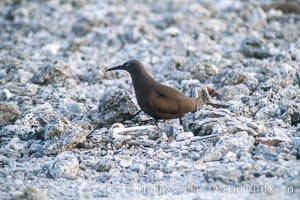
Brown noddy at Rose Atoll NWRF.
Location: Rose Atoll National Wildlife Sanctuary, American Samoa
Image ID: 00898
Location: Rose Atoll National Wildlife Sanctuary, American Samoa
Image ID: 00898
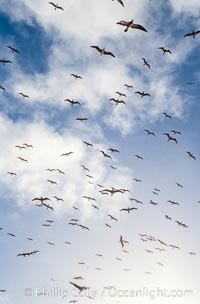
Brown boobies in flight at Rose Atoll. which hosts large numbers of seabirds on the small island.
Location: Rose Atoll National Wildlife Sanctuary, American Samoa
Image ID: 00904
Location: Rose Atoll National Wildlife Sanctuary, American Samoa
Image ID: 00904
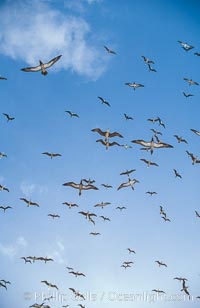
Brown boobies in flight at Rose Atoll. which hosts large numbers of seabirds on the small island.
Location: Rose Atoll National Wildlife Sanctuary, American Samoa
Image ID: 00905
Location: Rose Atoll National Wildlife Sanctuary, American Samoa
Image ID: 00905
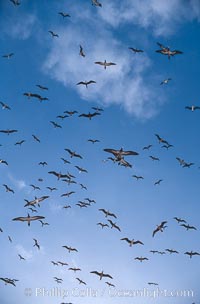
Brown boobies in flight at Rose Atoll. which hosts large numbers of seabirds on the small island.
Location: Rose Atoll National Wildlife Sanctuary, American Samoa
Image ID: 00906
Location: Rose Atoll National Wildlife Sanctuary, American Samoa
Image ID: 00906
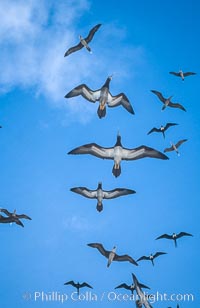
Brown boobies in flight at Rose Atoll. which hosts large numbers of seabirds on the small island.
Location: Rose Atoll National Wildlife Sanctuary, American Samoa
Image ID: 00907
Location: Rose Atoll National Wildlife Sanctuary, American Samoa
Image ID: 00907
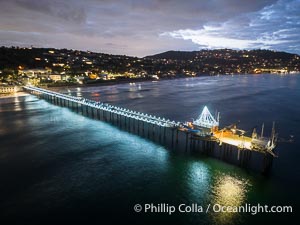
Scripps Pier with Holiday Christmas Lights Aerial Photo, seen here just before sunrise.
Location: La Jolla, California
Image ID: 39996
Location: La Jolla, California
Image ID: 39996
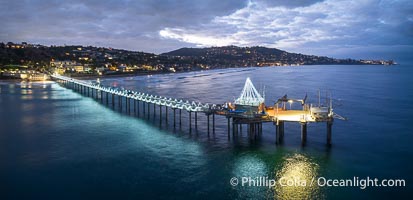
Scripps Pier with Holiday Christmas Lights Aerial Photo, seen here just before sunrise.
Location: La Jolla, California
Image ID: 39997
Location: La Jolla, California
Image ID: 39997
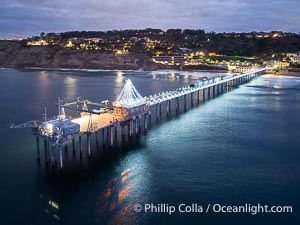
Scripps Pier with Holiday Christmas Lights Aerial Photo, seen here just before sunrise.
Location: La Jolla, California
Image ID: 39998
Location: La Jolla, California
Image ID: 39998
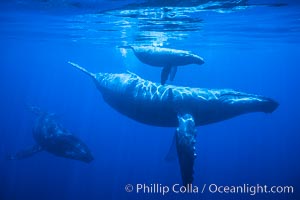
Humpback whale mother, calf (top), male escort (rear), underwater. A young humpback calf typically swims alongside or above its mother, and male escorts will usually travel behind the mother.
Species: Humpback whale, Megaptera novaeangliae
Location: Maui, Hawaii
Image ID: 02818
Species: Humpback whale, Megaptera novaeangliae
Location: Maui, Hawaii
Image ID: 02818
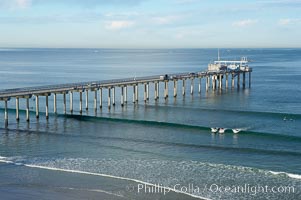
The Scripps Institution of Oceanography research pier is 1090 feet long and was built of reinforced concrete in 1988, replacing the original wooden pier built in 1915. The Scripps Pier is home to a variety of sensing equipment above and below water that collects various oceanographic data. The Scripps research diving facility is located at the foot of the pier. Fresh seawater is pumped from the pier to the many tanks and facilities of SIO, including the Birch Aquarium. The Scripps Pier is named in honor of Ellen Browning Scripps, the most significant donor and benefactor of the Institution.
Location: Scripps Institution of Oceanography, La Jolla, California
Image ID: 14748
Location: Scripps Institution of Oceanography, La Jolla, California
Image ID: 14748
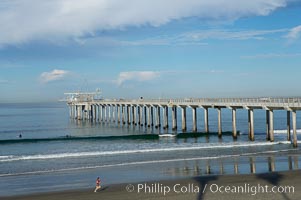
The Scripps Institution of Oceanography research pier is 1090 feet long and was built of reinforced concrete in 1988, replacing the original wooden pier built in 1915. The Scripps Pier is home to a variety of sensing equipment above and below water that collects various oceanographic data. The Scripps research diving facility is located at the foot of the pier. Fresh seawater is pumped from the pier to the many tanks and facilities of SIO, including the Birch Aquarium. The Scripps Pier is named in honor of Ellen Browning Scripps, the most significant donor and benefactor of the Institution.
Location: Scripps Institution of Oceanography, La Jolla, California
Image ID: 14749
Location: Scripps Institution of Oceanography, La Jolla, California
Image ID: 14749
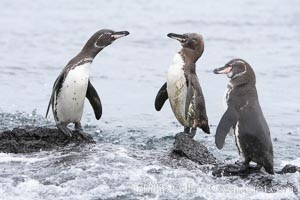
Galapagos penguins.
Species: Galapagos penguin, Spheniscus mendiculus
Location: Bartolome Island, Galapagos Islands, Ecuador
Image ID: 16517
Species: Galapagos penguin, Spheniscus mendiculus
Location: Bartolome Island, Galapagos Islands, Ecuador
Image ID: 16517
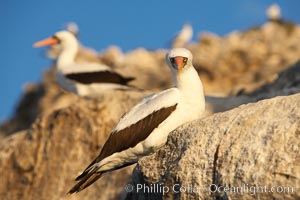
Nazca booby.
Species: Nazca booby, Sula granti
Location: Wolf Island, Galapagos Islands, Ecuador
Image ID: 16530
Species: Nazca booby, Sula granti
Location: Wolf Island, Galapagos Islands, Ecuador
Image ID: 16530
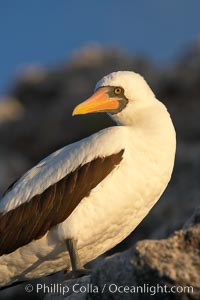
Nazca booby.
Species: Nazca booby, Sula granti
Location: Wolf Island, Galapagos Islands, Ecuador
Image ID: 16531
Species: Nazca booby, Sula granti
Location: Wolf Island, Galapagos Islands, Ecuador
Image ID: 16531
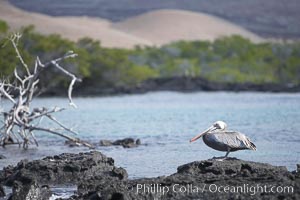
Brown pelican.
Species: Brown pelican, Pelecanus occidentalis
Location: North Seymour Island, Galapagos Islands, Ecuador
Image ID: 16542
Species: Brown pelican, Pelecanus occidentalis
Location: North Seymour Island, Galapagos Islands, Ecuador
Image ID: 16542
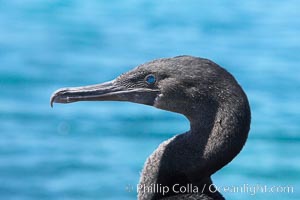
Flightless cormorant, head and neck profile. In the absence of predators and thus not needing to fly, the flightless cormorants wings have degenerated to the point that it has lost the ability to fly, however it can swim superbly and is a capable underwater hunter. Punta Albemarle.
Species: Flightless cormorant, Nannopterum harrisi, Phalacrocorax harrisi
Location: Isabella Island, Galapagos Islands, Ecuador
Image ID: 16550
Species: Flightless cormorant, Nannopterum harrisi, Phalacrocorax harrisi
Location: Isabella Island, Galapagos Islands, Ecuador
Image ID: 16550
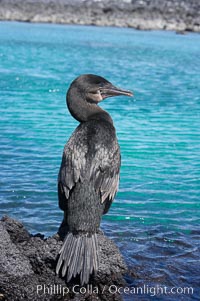
Flightless cormorant perched on volcanic coastline. In the absence of predators and thus not needing to fly, the flightless cormorants wings have degenerated to the point that it has lost the ability to fly, however it can swim superbly and is a capable underwater hunter. Punta Albemarle.
Species: Flightless cormorant, Nannopterum harrisi, Phalacrocorax harrisi
Location: Isabella Island, Galapagos Islands, Ecuador
Image ID: 16560
Species: Flightless cormorant, Nannopterum harrisi, Phalacrocorax harrisi
Location: Isabella Island, Galapagos Islands, Ecuador
Image ID: 16560
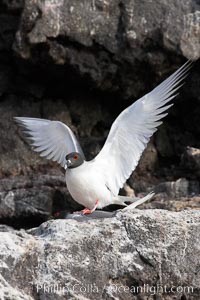
Swallow-tailed gull, mating, male on top, female just visible below.
Species: Swallowtail gull, Creagrus furcata
Location: Wolf Island, Galapagos Islands, Ecuador
Image ID: 16591
Species: Swallowtail gull, Creagrus furcata
Location: Wolf Island, Galapagos Islands, Ecuador
Image ID: 16591
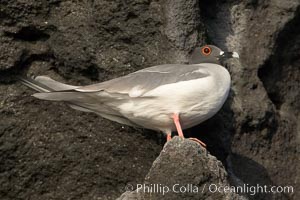
Swallow-tailed gull.
Species: Swallowtail gull, Creagrus furcata
Location: Wolf Island, Galapagos Islands, Ecuador
Image ID: 16593
Species: Swallowtail gull, Creagrus furcata
Location: Wolf Island, Galapagos Islands, Ecuador
Image ID: 16593
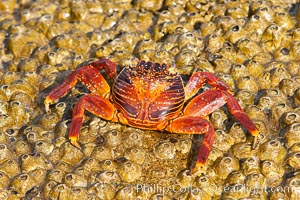
Sally lightfoot crab on barnacles.
Species: Sally lightfoot crab, Grapsus grapsus
Location: North Seymour Island, Galapagos Islands, Ecuador
Image ID: 16604
Species: Sally lightfoot crab, Grapsus grapsus
Location: North Seymour Island, Galapagos Islands, Ecuador
Image ID: 16604
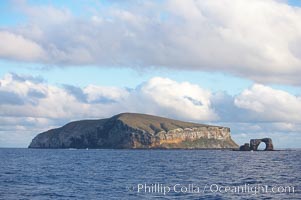
Darwin Island, with Darwins Arch on the right. Darwin Island is the northernmost of the Galapagos Islands and is home to enormous numbers of seabirds.
Location: Darwin Island, Galapagos Islands, Ecuador
Image ID: 16618
Location: Darwin Island, Galapagos Islands, Ecuador
Image ID: 16618
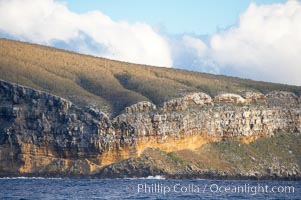
Darwin Island, the northernmost of the Galapagos Islands, hosts sheer seacliffs rising above the ocean that are home to tens of thousands of seabirds.
Location: Darwin Island, Galapagos Islands, Ecuador
Image ID: 16619
Location: Darwin Island, Galapagos Islands, Ecuador
Image ID: 16619
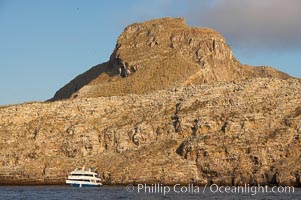
Wolf Island, with a liveaboard tour boat below sheer seacliffs, is the largest of the islands in the distant northern island group of the Galapagos archipelago, is home to hundreds of thousands of seabirds. Vast schools of sharks and fish inhabit the waters surrounding Wolf Island.
Location: Wolf Island, Galapagos Islands, Ecuador
Image ID: 16629
Location: Wolf Island, Galapagos Islands, Ecuador
Image ID: 16629
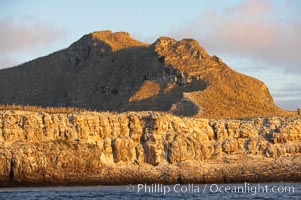
Wolf Island is the largest of the islands in the distant northern island group of the Galapagos archipelago, is home to hundreds of thousands of seabirds. Vast schools of sharks and fish inhabit the waters surrounding Wolf Island.
Location: Wolf Island, Galapagos Islands, Ecuador
Image ID: 16630
Location: Wolf Island, Galapagos Islands, Ecuador
Image ID: 16630
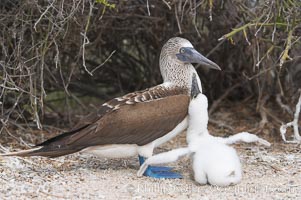
Blue-footed booby adult and chick.
Species: Blue-footed booby, Sula nebouxii
Location: North Seymour Island, Galapagos Islands, Ecuador
Image ID: 16659
Species: Blue-footed booby, Sula nebouxii
Location: North Seymour Island, Galapagos Islands, Ecuador
Image ID: 16659
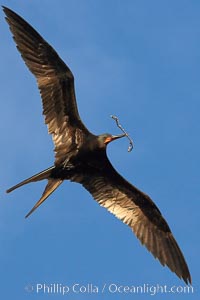
Great frigatebird, adult male, in flight, carrying twig for nest building, green iridescence of scapular feathers identifying species. Wolf Island.
Species: Great frigatebird, Fregata minor
Location: Wolf Island, Galapagos Islands, Ecuador
Image ID: 16708
Species: Great frigatebird, Fregata minor
Location: Wolf Island, Galapagos Islands, Ecuador
Image ID: 16708
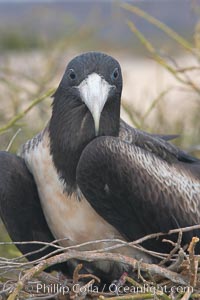
Magnificent frigatebird, adult female on nest.
Species: Magnificent frigatebird, Fregata magnificens
Location: North Seymour Island, Galapagos Islands, Ecuador
Image ID: 16738
Species: Magnificent frigatebird, Fregata magnificens
Location: North Seymour Island, Galapagos Islands, Ecuador
Image ID: 16738